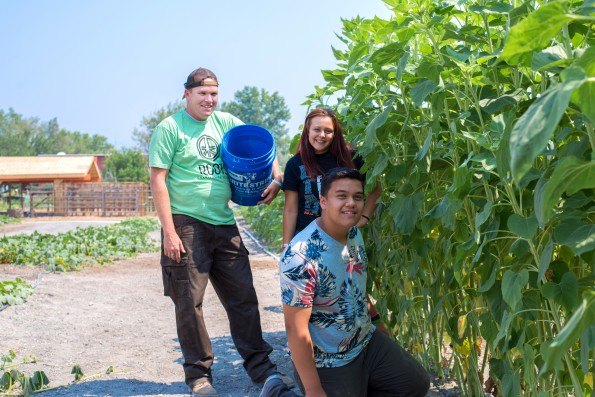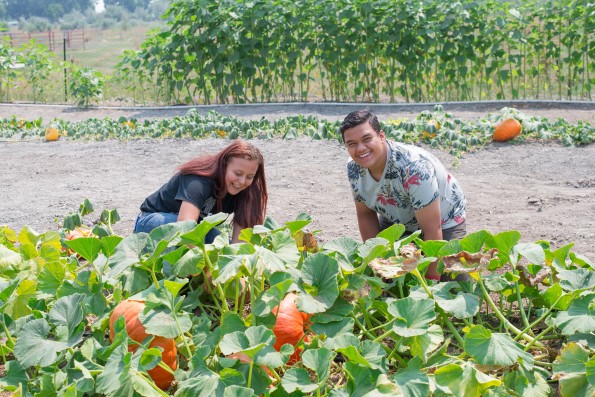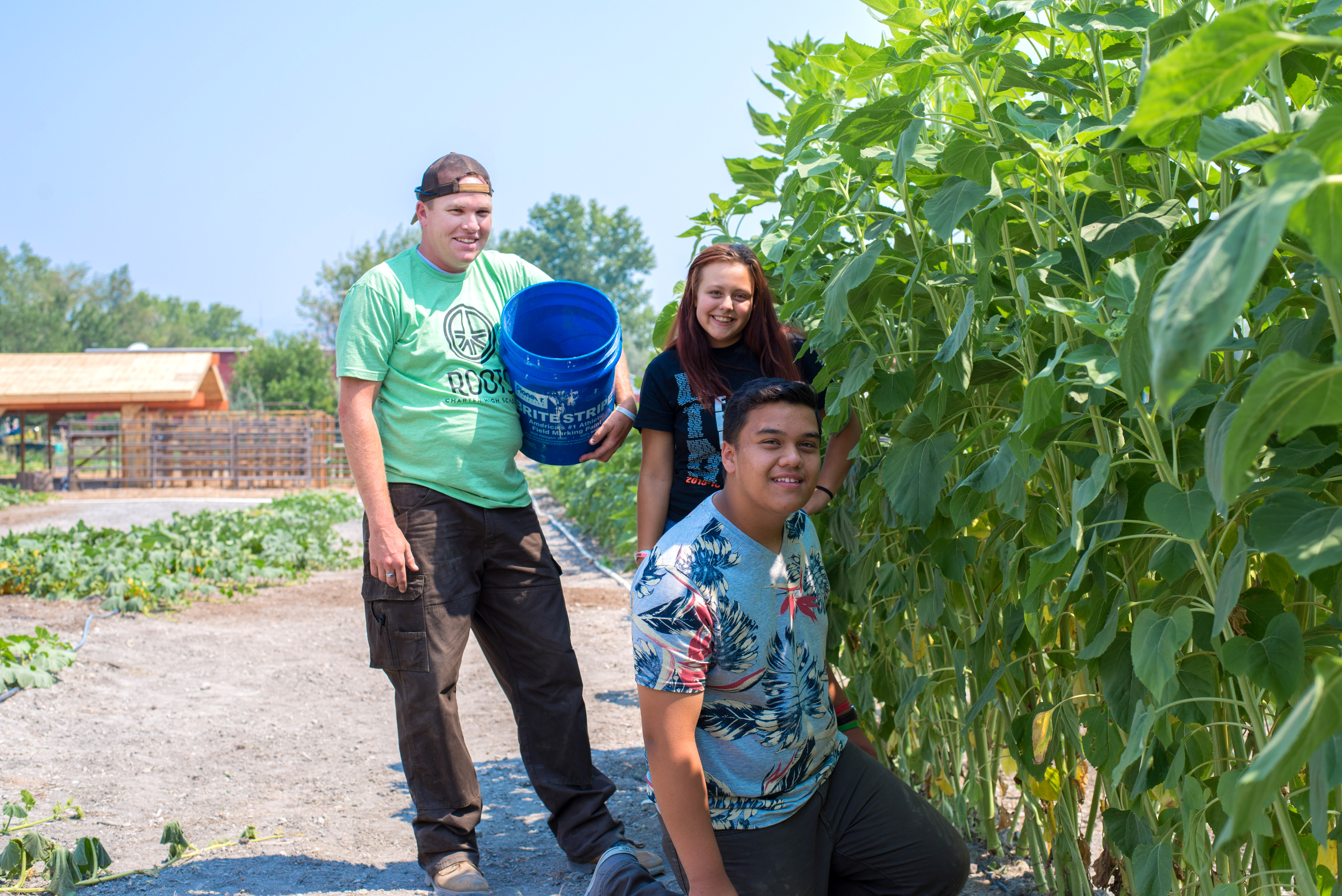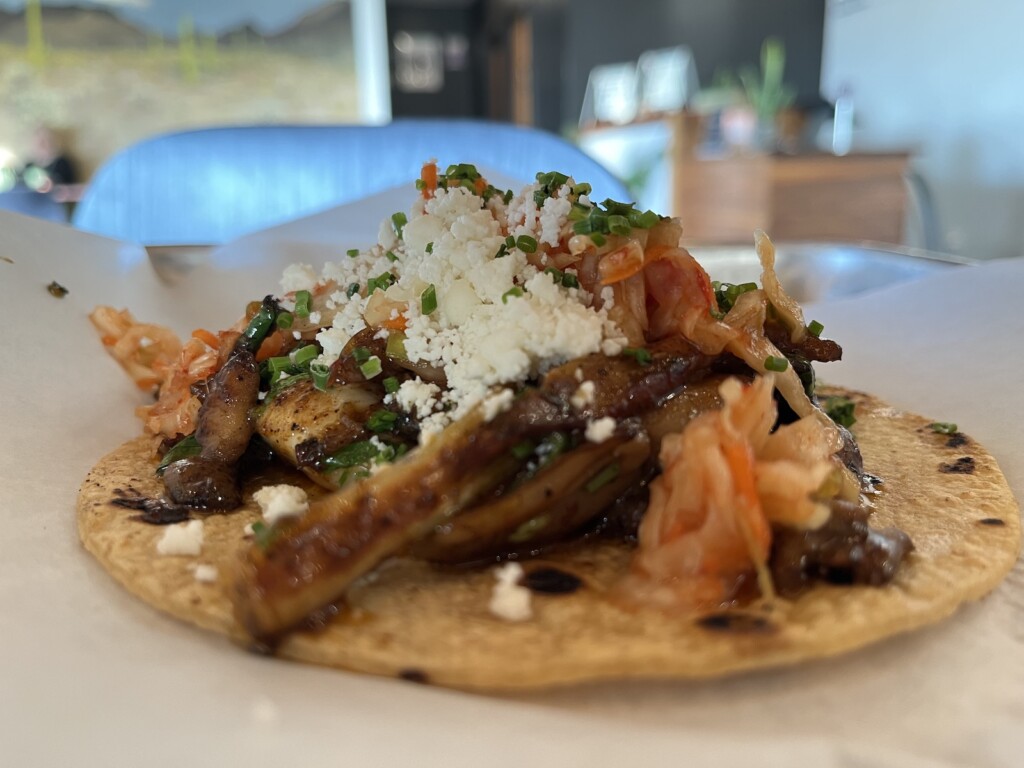
Roots High is breaking ground in Utah’s school system. Students at the new Granite District charter school will learn subject matter through working both in the classroom and on the school’s five-acre farm.
At Roots, ideas literally are sown, concepts take root and sprout, and knowledge grows. Open in August for the 2015-16 school year, The West Valley City school is Utah’s first farm-based public school.
“Education is about experiences,” says Roots Director Tyler Bastian. Students grades 9-12 will engage in “authentic,” or real life, learning. They will apply classroom information to grow and harvest fruits and vegetables, and tend farm animals. The program focuses on leadership skills and college prep, with emphasis on math, science, english and arts. The model is a progressive approach to the conventional and, many parents and educators feel, outdated model of “teaching to the test, or jumping through hoops to meet data criteria. Authentic learning,” Bastian adds, “is really the only way to learn if there’s going to be retention.”
Bastian said the biggest hurdle he had in seeking Utah charter school approval was that “the school year doesn’t mesh with the farm schedule.” The current public school calendar gives students summers off when, historically, youth would help with the summer harvest. But through the Roots Youth Employment Program, students will work the farm year-round. Beginning next summer, 25-30 students will be hired to grow flowers and vegetables to sell at market and through Root’s Community Supported Agriculture program. This past summer, student volunteers worked with Farm Manager Spencer Annett clearing land, building a pavilion and growing crops.
Roots program uses a “consequence centered framework.” Teachers, staff and students will refer to the four aspects of the framework–choice, action, energy and connection–as they learn and build relationships. “That’s the culture we’re trying to create,” Bastian states. “If a kid misses three classes here, for example, it’s easier to explain why it’s important to attend class. If it’s a student’s job to water the seedlings, and that student doesn’t show up, the seedlings will shrivel up and die.” Likewise, students in veterinary classes will have “out-of-the-box experiences” as animal behavior is sometimes capricious. “That unpredictable side,” Bastian anticipates, “will be one of the teaching strong points.”
The farm is where students wearing Carhartts, sweatshirts and close-toed shoes will apply the knowledge they learn in the classroom. “In math,” Bastian explains, “if we’re teaching ratios, the students can put on a bee suit, go out in a swarm of bees and count the numbers of worker, drone and queen bees.”
Current enrollment is approximately 170, but the school can accommodate almost 300 students, and the program has attracted quality teachers. “We lucked out,” Bastian says. “Many of our teachers have years of experience. Two of them each have over 20 years teaching experience.”

Excited to begin, Bastian sees only one potential push-back from students. Working outdoors throughout the year may be new to students. Bastian anticipates that some students may start the year wearing “rose-colored glasses” and be challenged by the labor aspect of the program, but, compared to the potential value of the program, he says, “That’s only a cultural speedbump.”






